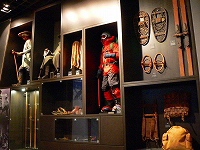
Omachi Mountain Museum
Built in 1951, this was Japan’s first mountain themed museum. On the first floor, rich materials introduce the history of mountain climbing and people’s interaction with the mountains. The second floor introduces the origins of the Japanese archipelago and its impact on the geology of this region. You can also find information on the flora and fauna of the mountains, such as the Japanese serow and ptarmigan. On the third floor, you can enjoy panoramic views of the Japan Alps with information to help you identify specific peaks. There are also explanations of yukigata (patterns seen in the remaining snow on the mountains at specific times of year).
There is also a zoological & botanical garden, breeding Japanese serow, and an archive of mountain books.
| Admission | 400 yen | Hours | 9:00 a.m. to 5:00 p.m. (final admission 4:30 p.m.) |
|---|---|---|---|
| Location | See Google Map | Closed on | Mondays, the day after national holidays, and around the New Year’s Day. (Open on Monday if a national holiday, and closed on the following day.) Open 7 days a week in July and August. |
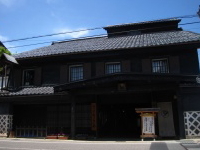
Salt Road Chojiya (formerly known as Salt Road Museum)
In the past this region contained Chikuni Kaido, a road used to carry salt from Itoigawa, on the coast of the Sea of Japan, to Omachi and then on to Matsumoto. This museum introduces the history of this road, also known as the Salt Road, and the lives of its people. Set in an Edo era building, exhibits include old methods of transportation for cattle and heavy goods, travelling clothes & lunch boxes, daily tools of the local residents, ancient documents and more.
| Admission | 500 yen | Hours | 9:00 a.m. to 5:00 p.m. (final admission 4:30 p.m.) during May thru October 9:00 a.m. to 4:30 p.m. (final admission 4:00 p.m.) during November thru April |
|---|---|---|---|
| Location | Closed on | 3rd & 4th Wednesdays during May thru October, every Wednesday during November thru April, and around the New Year Day. |
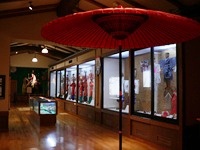
Yabusame Hall
The Omachi Yabusame ritual involves using a bow and arrow to shoot a target from horseback while riding a traditional horse. The archers on horses are all boys, which is unusual even in Japan. This museum showcases the paraphernalia of Omachi horseback archery and the summer festival, all under one roof. It is located next to the Salt Road Chojiya.
| Admission | 500 yen (Salt Road Chojiya joint pass) | Hours & Closed Days | Same as for Salt Road Chojiya |
|---|---|---|---|
| Location | See Google Map |
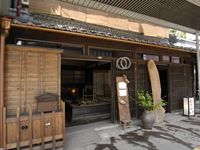
Wachigai Gallery
The residence of a leading figure in the Edo era, this typical Omachi building is a Kyoto style townhouse. The first floor houses a restaurant serving meals cooked from local produce. The second floor is home to a gallery that, throughout the seasons, displays photo exhibitions and the work of local craftsmen. You can feel the local history throughout the entire house and its gardens.
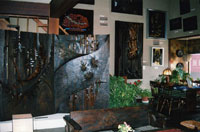
Mokusho Azumino Wood Carving Museum
Rather than the work of prominent artists, these enlightened works of art are the produced by the handiwork of individual farmers. Crafts such as wood carving are rooted in the “Farmer Art Movement” in Omachi during the 20th century. This gallery exhibits the wood carvings and carving life of craft artist Sadao Takahashi. Handmade work such as rugged mountain sculptures and pretty plants are also on sale.
| Admission | Free | Hours | 9:00 a.m. to 5:00 p.m. |
|---|---|---|---|
| Location | See Google Map | Closed on | Irregular |

